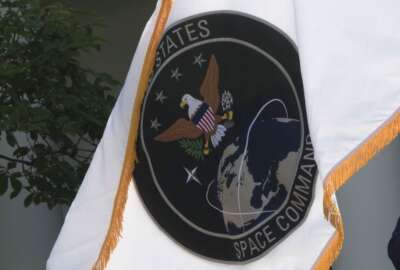Space Force controls all military satellites
The Defense Department was not the only agency shifting control of its satellites this month.
For the first time in the agency’s history, one military branch is in control of all of the Defense Department’s military satellite communication functions. The Army transferred control of their satellite communications mission to the Space Force during a ceremony on Aug. 15.
With the new role, the Space Force got additional help to oversee the satellite communications. The ceremony transferred around 200 civilians and 300 military personnel from serving in the Army to the Space Force.
The satellite communications constellations provide information to everyone from the president to interagency and international partners conducting global operations.
“We are proud to continue the Army’s legacy as we assume this mission, and we are committed to never forgetting the users of this remarkable SATCOM enterprise — namely, the entire Joint Force, including Army Soldiers,” Lt. Gen. Stephen Whiting, commander of Space Operations Command, said in a release.
The 53rd Space Operations Squadron is now the only DoD organization that will conduct payload and transmission controls for the Defense satellite communications system and wideband global SATCOM satellite constellations.
In June, the Navy transferred more than a dozen satellites and additional personnel to the Space Force. In total, the transition realigned 15 Army and Navy units to the Space Force to continue working on the satellite communications.
The Defense Department wasn’t the only agency shifting control of its satellites this month. On Aug. 11, the U.S. Geological Survey, a part of the Interior Department, assumed operational control of the Landsat 9 satellite from NASA.
The Landsat 9 is the latest remote-sensing satellite to provide global coverage of the changes to Earth’s landscape since 1972.
“For more than 50 years now, Landsat satellites have helped us learn more about how Earth systems work, how human activities affect those systems, and how we can make better decisions for the future,” said NASA Administrator Bill Nelson at the ceremony.
Tanya Trujillo, assistant secretary for water and science at USGS, said the 50 year archive provides scientists with a constant baseline to track climate change and see changes to the land that may otherwise go unnoticed.
Copyright © 2024 Federal News Network. All rights reserved. This website is not intended for users located within the European Economic Area.
Abigail Russ is an intern with Federal News Network.






